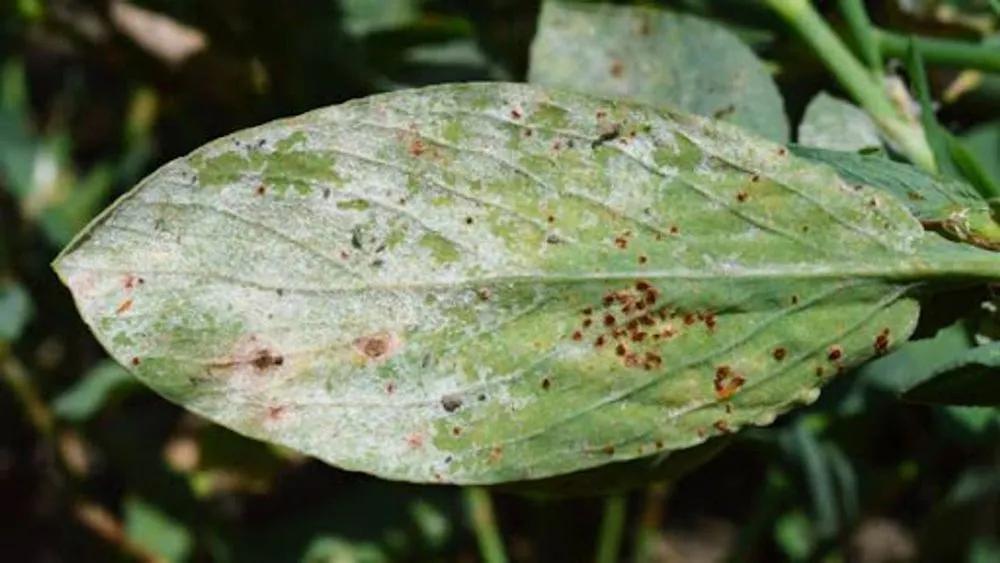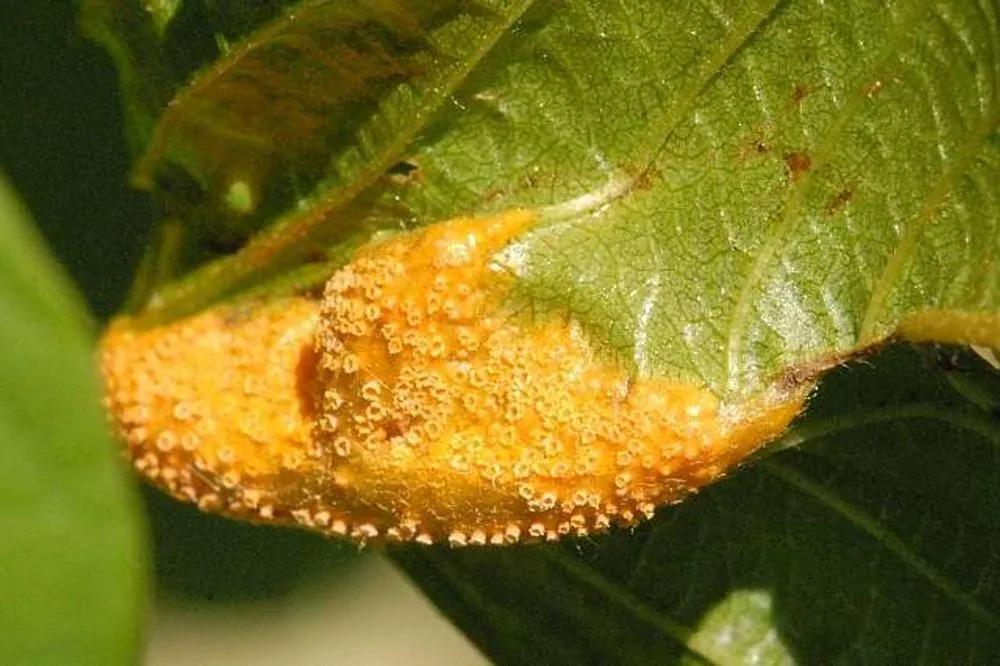The order Pucciniales contains a large number of fungal plant pathogens causing rust - one of the most important diseases of crops.
Pucciniales



Signs of damage
Plants with severe rust infection may appear stunted, chlorotic (yellowed), or may display signs of infection such as rust fruiting bodies. Rust fungi grow intracellularly, and make spore-producing fruiting bodies within or, more often, on the surfaces of affected plant parts.
How to prevent
Planting resistant crops is the ideal form of disease prevention, however, mutations can give rise to new strains of fungi that can overcome plant resistance. Although the disease cannot be stopped by removal of the alternate host, the life cycle is disrupted and the rate of mutation is decreased because of reduced genetic recombination. This allows resistance bred crops to remain effective for a longer period of time.
Heal
Macrocyclic Disease: Developing a management plan for this type of disease depends largely on whether the repeating stage (urediniospores) occur on the economically important host plant or the alternate host. For example, the repeating stage in white pine blister rust disease does not occur on white pines but on the alternate host, Ribes spp. During August and September Ribes spp. give rise to teliospores which infect white pines. Removal of the alternate host disrupts the life cycle of the rust fungi Cronartium ribicola, preventing the formation of basidiospores which infect the primary host. Although spores from white pines cannot infect other white pines, survival spores may overwinter on infected pines and reinfect Ribes spp. the following season. Infected tissue is removed from white pines and strict quarantines of Ribes spp. are maintained in high risk areas.
Go Premium to continue reading
Also you’ll get unlimited access to disease identification and all the other beneficial features
More problems
